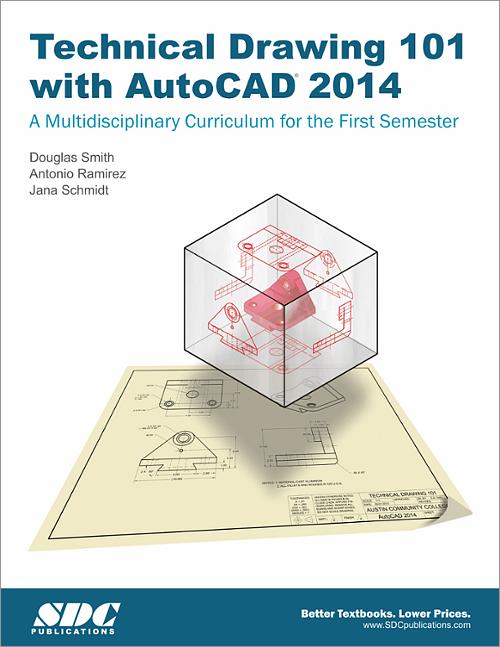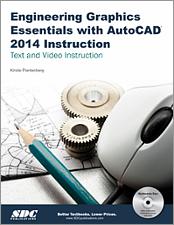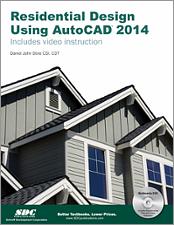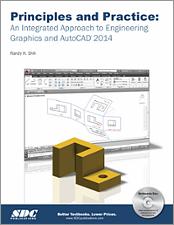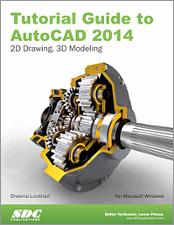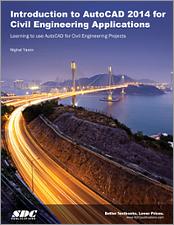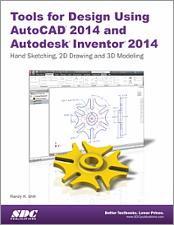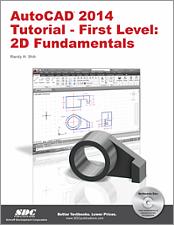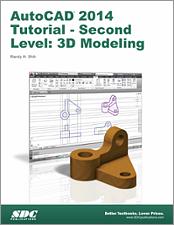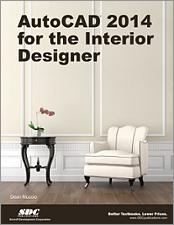Technical Drawing 101 with AutoCAD 2014
A Multidisciplinary Curriculum for the First Semester
- Description
- Contents
- Downloads
- Instructor Resources
- Details
Description
Key Features
- Blends technical drawing and an introduction to AutoCAD 2014
- Covers both mechanical and architectural projects
- Designed to be used in a single semester, instructor led course
- Video instruction demonstrates how to use AutoCAD tools and commands
- Each chapter contains key terms, unit summaries, review questions and drawing projects
In Detail
Technical Drawing 101 covers topics ranging from the most basic, such as making freehand, multiview sketches of machine parts, to the advanced—creating an AutoCAD dimension style containing the style settings defined by the ASME Y14.5-2009 Dimensioning and Tolerancing standard. But un-like the massive technical drawing reference texts on the market, Technical Drawing 101 aims to present just the right mix of information and projects that can be reasonably covered by faculty, and assimilated by students, in one semester. Both mechanical and architectural projects are introduced to capture the interest of more students and to offer a broader appeal. The authors have also created video tutorials for this book in which they demonstrate how to use many of AutoCAD's tools and commands.
The CAD portion of the text incorporates drafting theory whenever possible and covers the basics of drawing setup (units, limits, and layers), the tools of the Draw, Modify, and Dimension toolbars, and the fundamentals of 3D modeling. By focusing on the fundamental building blocks of CAD, Technical Drawing 101 provides a solid foundation for students going on to learn advanced CAD concepts and techniques (paper space, viewports, xrefs, annotative scaling, etc.) in intermediate CAD courses.
In recognition of the diverse career interests of our students, Technical Drawing 101 includes projects in which students create working drawings for a mechanical assembly as well as for an architectural project. We include architectural drawing because our experience has shown that many (if not most) first-semester drafting students are interested in careers in the architectural design field, and that a traditional technical drawing text, which focuses solely on mechanical drawing projects, holds little interest for these students. The multidisciplinary approach of this text and its supporting materials is intended to broaden the appeal of the curriculum and increase student interest and, it is hoped, future enrollments.
Table of Contents
- Technical Drawing
- Multiview Drawing
- Traditional Drafting Tools and Techniques
- Computer-Aided Design Basics
- Dimensioning Mechanical Drawings
- Dimensioning Architectural Drawings
- Isometric Drawings
- Sections
- Auxiliary Views
- Blocks
- Mechanical Working Drawings
- Architectural Working Drawings
- Modeling Basics
Appendix A: ANSI/ASME Standards
Appendix B: ISO Standards
Appendix C: United States Dimensioning and Tolerancing Basics
Glossary
Index
Downloads
Supplements available to students include:
- Video tutorials of various tools and commands in AutoCAD
- AutoCAD prototype drawings for each CAD assignment
- Lettering practice sheets and multiview sketching grid sheets in pdf format
For additional information on downloading, unzipping, and using these files visit the downloads section on our FAQ page.
Instructor Resources
The following downloadable resources require that you are registered, logged in and have been authenticated as an instructor.
Supplements available to instructors include:
- A comprehensive Instructor’s Manual that explains how to present the material in each chapter, and the resources available to both teachers and students
- Lecture materials for each chapter in PowerPoint format
- Check prints consisting of AutoCAD dwg files with solutions to all drawing problems
- Prototype drawings for each CAD assignment in AutoCAD dwg file format
- Syllabus, tests, quizzes, answer keys, and sketching and traditional drafting files in doc and pdf format
Product Details
| Publisher | SDC Publications |
| Authors | Antonio Ramirez, Jana Schmidt, Douglas Smith |
| Published | May 29, 2013 |
| User Level | Beginner |
| Pages | 482 |
| Binding | Paperback |
| Printing | Black and White |
| Print ISBN | 978-1-58503-819-0 |
| Print ISBN 10 | 1585038199 |
| eBook ISBN | 978-1-63056-011-9 |
